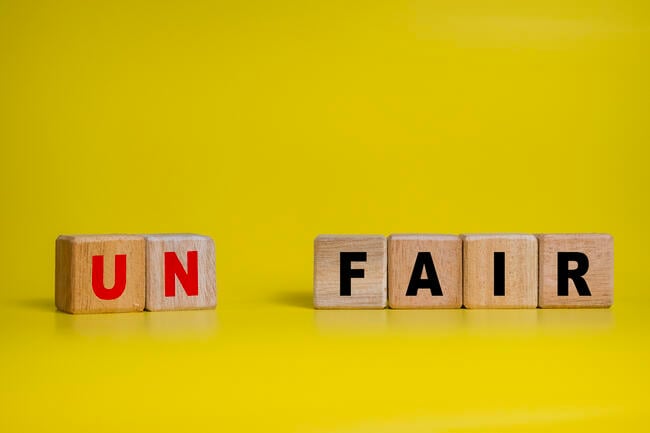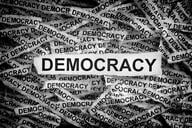You have /5 articles left.
Sign up for a free account or log in.

Dadan/iStock/Getty Images Plus
My 5-year-old recently told me it was unfair that her teacher makes her write from left to right “like everyone else.” She’s left-handed, and for her, it smudges the ink and feels awkward—while her right-handed friends have no problem. I affirmed her frustration. It is harder. But I also knew that was discomfort, not injustice.
If she told me her school never included stories with Black or Indian characters—her own identities—or skipped over Black history and Diwali while celebrating Halloween and Christmas, I’d respond differently. That’s not just about feelings. That’s curricular erasure—structural invisibility embedded in education.
Higher education is now facing a similar test of discernment. In recent weeks, the American Bar Association, under pressure from the Trump administration, suspended its DEI accreditation requirement for law schools. The University of Michigan shuttered its DEI programs. And Harvard University received a sweeping federal demand to dismantle its DEI programs, reorient admissions and hiring, and submit to ideological audits.
Harvard’s decision to reject the federal ultimatum—even at the cost of more than $2 billion in research funding—offers a rare but vital example of institutional clarity. Harvard said no to the false equivalence now dominating our public discourse: the notion that discomfort is the same as discrimination.
Critics claim that DEI efforts create an exclusionary climate and reflect a lack of “viewpoint diversity,” framing a commitment to racial equity as an ideological litmus test. But that framing ignores history, context and the actual purpose of DEI work, which at its best corrects for the unfairness of cumulative white advantages built into college admissions, curriculum and culture in higher education. It treats the discomfort that arises when racism is named as equivalent to structural exclusion. And then, under that pretense, the federal government now imposes its own litmus test—seeking to dismantle the very practices aimed at addressing structural harm.
Now that federal litmus test is extending into faculty hiring. The Equal Employment Opportunity Commission, under the Trump administration, has launched an investigation into whether Harvard’s hiring practices discriminate against white men and other traditionally overrepresented groups. Cloaked in the language of civil rights enforcement, the inquiry reflects a disturbing reversal: Efforts to address long-standing exclusion are being reframed as exclusion themselves. Rather than confronting the structural realities that have kept academia disproportionately white and male, this investigation uses claims of “reverse discrimination” to undermine the very mechanisms created to correct inequity. It’s a strategic misreading of fairness—one that turns tools of justice into instruments of suppression.
Similar to my daughter calling left-handed writing “unfair” because it invokes feelings of discomfort and victimization—despite the absence of structural exclusion—DEI’s powerful opponents manipulate the language of fairness to justify conformity and suppress interventions that respond to actual harm. “Race neutrality” is the legal fiction of our time, much like “separate but equal” was in another era. Both erase history in favor of surface-level parity and use the language of justice to obscure harm. We saw this logic in the Students for Fair Admissions ruling, which restricted race-conscious admissions. But as Justice Ketanji Brown Jackson wrote in her dissent, the deep racial disparities we see today were “created in the distant past, but have indisputably been passed down to the present day.” The issue isn’t too much talk about race—it’s our refusal to hear it.
Now, under the guise of neutrality, institutions are being pressured to abandon DEI work, censor curricula and silence student voices. And many institutions are acting as if this call is guided by law. But the SFFA decision didn’t ban DEI programming or prohibit race-based affinity spaces, racial climate assessments or the consideration of lived racial experiences in admissions essays.
This is interpretive overreach: stretching legal decisions out of fear. In doing so, institutions compromise not only their policies, but their principles. But there’s another path—what I call interpretive reimagination. It’s the ethical clarity to meet ambiguity with purpose, not retreat. To respond not only as a matter of compliance, but of mission. And this discernment—the ability to differentiate between discomfort and structural harm—is at the heart of racial literacy. It means recognizing that not every claim of unfairness is equal and that treating them as such can perpetuate injustice. That discernment is essential for educators and institutions.
What we’re witnessing is not just a policy shift. It’s a redefinition of fairness—one that casts efforts to name inequality as divisive, while branding ideological control as “viewpoint diversity.” That redefinition is being enforced not just through rhetoric, but through decrees, audits and intimidation. Harvard’s refusal matters—not because the institution is perfect, but because it disrupted the pattern. It reminded us that higher education still has choices. The contrast with Michigan and the ABA is instructive. When institutions comply pre-emptively, they legitimize coercion. They don’t just narrow the space for justice—they help close it.
Fairness, equity and justice are not settled ideas. They are contested. And higher education is not outside that contest—it is a primary site of it. To meet this moment with integrity, we must refuse the fantasy of neutrality, name systems of advantage and commit to teaching truth, even when that truth is inconvenient. The difference—between choosing caution or courage—will depend on whether we, as educators, can practice the kind of discernment that parents are called to every day. Because, ultimately, this isn’t just about legal compliance or institutional risk. It’s about whether the stories we tell about fairness will include all of us—or only those already at the center.




